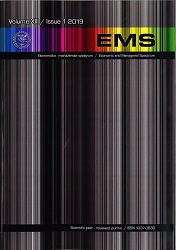DEFAULT PREDICTION USING NEURAL NETWORKS FOR ENTERPRISES FROM THE POST-SOVIET COUNTRY
DEFAULT PREDICTION USING NEURAL NETWORKS FOR ENTERPRISES FROM THE POST-SOVIET COUNTRY
Author(s): Vendula Fialová, Andrea FolvarčnáSubject(s): Micro-Economics, Policy, planning, forecast and speculation, Accounting - Business Administration, ICT Information and Communications Technologies
Published by: Žilinska univerzita v Žiline, Fakulta prevádzky a ekonomiky dopravy a spojov, Katedra ekonomiky
Keywords: default; solvency; prediction; neural networks;
Summary/Abstract: The application of neural networks for the classification of companies into a group of prosperous or non-prosperous companies is relatively new. Their use for this purpose has been the subject of research only since the early nineties of the last century. The work focuses on the possibilities of predicting the financial health of companies in the post-Soviet countries, especially in the Czech Republic, using neural networks. The aim is to create a model for predicting solvency or insolvency. The first part is a brief introduction to the issue and an explanation of the reason for the selection of neural networks for processing. Due to the rapid development of computer technology, neural networks are increasingly used in experimental and practice tasks. Application tasks such as information processing, classification of patterns or situations, optimization problems, and prediction tasks are used in industry, management, finance, telecommunications, military technology, healthcare, and elsewhere. The following methodology explains the procedure and the database processing method used. The results contain the output obtained from the SPP program in which the model was generated. We examined a total of 452 companies, some of which entered the training and testing phase. The results are interpreted graphically and in tables. The discussion and conclusion section summarizes the findings and possible possibilities for further processing using neural networks.
Journal: Ekonomicko-manazerske spektrum
- Issue Year: 14/2020
- Issue No: 1
- Page Range: 43-51
- Page Count: 9
- Language: English

